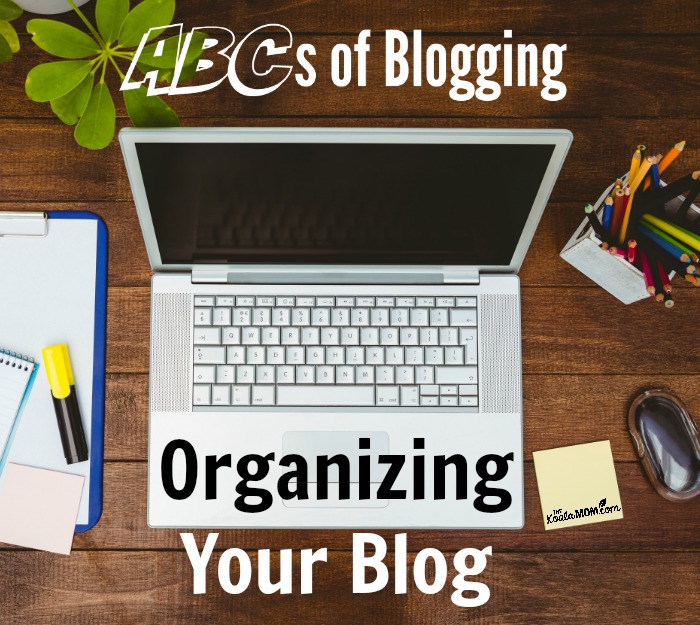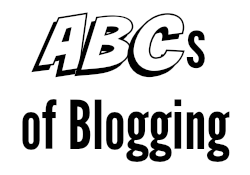Organization is just as important for your blog as it is for your home or office. Just as disorganization makes your home look messy and uninviting to guests, it also makes your blog look less attractive to readers. Worse, if your readers can’t find what they are looking for on your blog, they’ll leave. Here are my top 5 tips for organizing your blog.

Note: most of these tips apply to WordPress. They may not work in Blogger, and if you are still using Blogger, I strongly recommend that you switch to WordPress. I know it’s hard; I used Blogger for seven years before switching. Blog organization was one of the big reasons I switched. Blogger didn’t have blog categories, making it hard for readers to access my old content. If the idea of switching seems overwhelming to you, hire Blogelina to make the switch for you, like I did (that’s my affiliate link).
Using Categories vs. Tags
There are two primary ways to organize your blog content: by categories and by tags.
Think of categories as the table of contents for your blog. You should have 3 – 5 main categories that you blog about. Under these categories, you can have subcategories (just like chapters in a book have sections within chapters), but too many categories can make your blog hard to navigate.
Think of tags as the index for your blog. This is where you list every topic or subtopic that you blog about. You still want to keep this general, however; you don’t want to have a tag that refers to only one post. For example, I sometimes tag a book review with the author’s name—but only if I know that I’ve written multiple reviews for that author. If this is my first review for them, or I don’t expect to review another book by them, then I won’t tag it with their name.
Organizing Your Sidebar
Your sidebar is important, valuable real estate because no matter what post on your blog your readers visit, the sidebar remains visible. This is where you’ll likely place your bio, social media buttons, archive menu, search box, and advertising (if you monetize). However, if your sidebar becomes too busy, then it loses its purpose. I’ve visited blogs where my eyes just glaze over at all the buttons and info in the sidebar. I work hard to keep my sidebar simple and organized.
Prioritize what goes here, especially if you are accepting sidebar ads. I highly recommend having only one sidebar (rather than two). Consider what content can go in your footer and what should go on a page of its own. For example, I review books for multiple publishers and PR companies, who have all provided me with badges; none of those go in my sidebar. Rather, I’ve included them in my Book Reviews page.
Organizing Your Navigation Bar
Your navigation bar is another important place for your readers. Most blogs have a “home” button on the left side of the nav bar, so that if a reader has clicked through various posts, they can still get back to your main page. Next, you want your main blog categories. Finally, you can place your About Me page.
Your nav bar can contain drop-down categories under the main categories. Keep thinking of these as your Table of Contents; if your blog was a book and your reader had flipped it open to the Table of Contents, could they skip directly to the chapter they most want to read?
Organizing Your Blog Posts
You should be thinking of organization even when writing your posts. Blog posts tend to have a casual, conversation tone, but they should still have a clear beginning, middle and end (or body, intro and conclusion, just like you learned in high school English class). You want a hook to nab your readers at the beginning of the post and a final thought or question to leave them with at the end.
The format of your blog posts is up to you, but make sure that it looks neat. Images should be consistent in size; for example, my theme is 700 pixels wide so I usually make all my images that width. If your images are too wide for your theme or too small to see, readers get frustrated. Consider using the same style or filter for all of your images, so your readers start to recognize it.
Text should be left aligned, not centered (that’s hard to read). It should also be a consistent size throughout your posts. Use bold, italics and headers consistently throughout your posts as well. Don’t use H2 in the title at the top of your post and then H3 in the title at the bottom of the post (unless it’s meant to be a subtitle). Finally, PROOFREAD!
Managing Your Archives
Your archives or old posts are a wealth of information for your readers and a source of traffic for you. However, if those posts are outdated, poorly written, or include bad images, then they’ll create a poor impression for you. Just as you spring clean your house, you should do some annual or semi-annual organizing and decluttering in your blog archives. Find out more about how to maximize your archives here.
Take a look at some of your favourite blogs and see how they are organized. Is it easy to find the content you want? Is their site and layout appealing? Does the sidebar add value or distract you? Apply what you’ve learned to organizing your blog. Good luck!


No Responses Yet